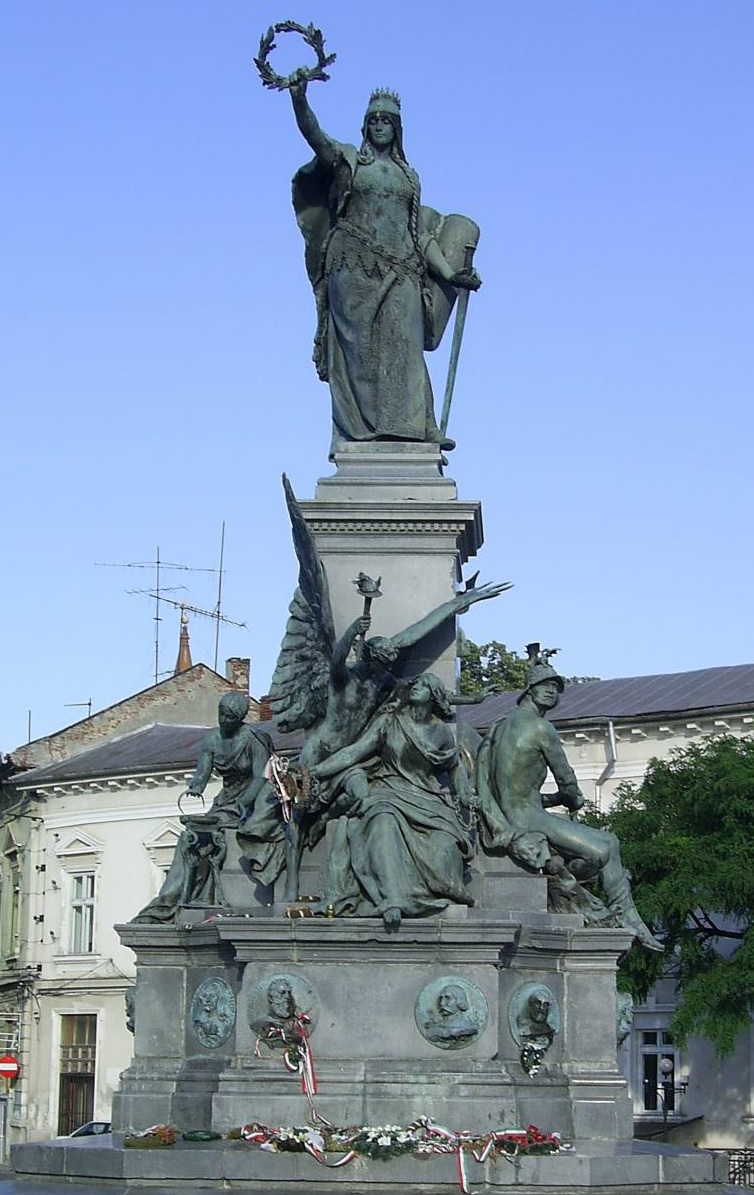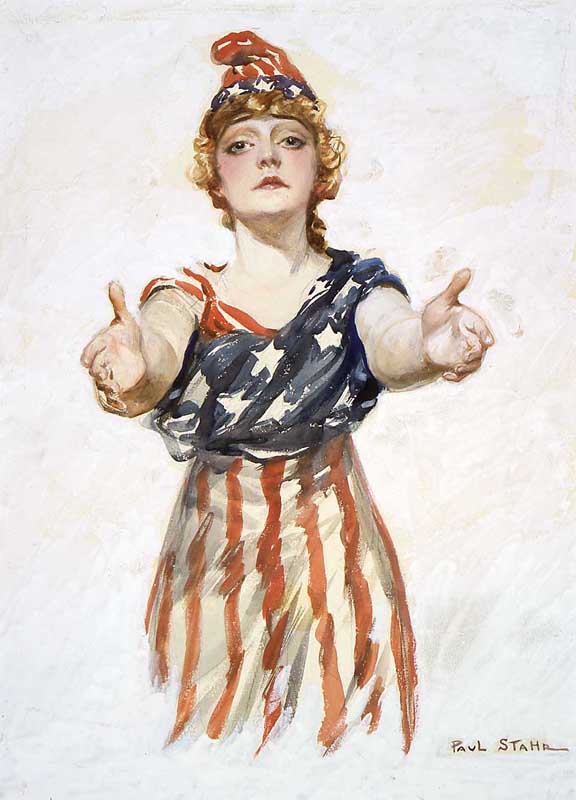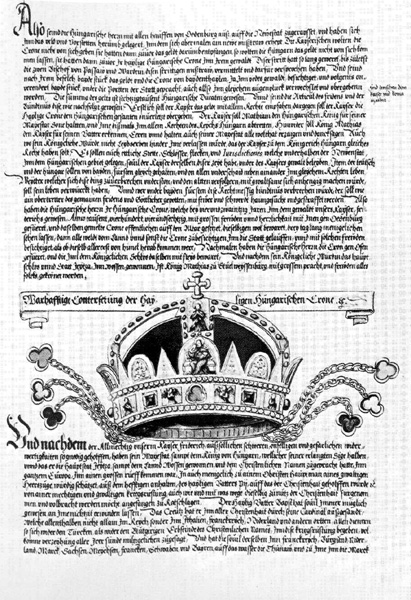|
Lady Of Hungaria
Hungaria is a national personification of Hungary, an allegory and a personification of the nation. The Lady of Hungaria is displayed in many places in Hungary and across its borders. She symbolizes the liberty of Hungary. History After the decades of the lost revolution and independence war of 1848/49 the Habsburg monarchy went into absolutism. In the 1860s, monuments were raised to commemorate the lost liberty. One of these depictions was the Lady of Hungaria. She is often symbolised as a woman with a helmet or the Holy Crown of Hungary on her head, and a sword and shield in her hands. At Arad where the 13 martyrs of independence war were executed, a huge monument was raised in 1889. The central figurine is Hungaria. After the Treaty of Trianon and the loss of lives after World War I, the lady became the symbol for hope and the resurrection of Hungary. See also * Statue of Liberty, a gift from the French people to the American people, to commemorate the American Decla ... [...More Info...] [...Related Items...] OR: [Wikipedia] [Google] [Baidu] |
Hungária Nőalak Aradon , a group of asteroids named after 434 Hungaria
{{Disambiguation ...
Hungaria or Hungária may refer to: *Latin for Hungary, a European country **For historical entities (from 895) see: Hungary (other) *Lady of Hungaria, the national personification of Hungary * ''Hungaria'' (Liszt), a symphonic poem by Franz Liszt * ''Hungaria'' (train), an express train between Budapest and Berlin * Hungária, a pop-rock music group from Hungary * Hungária körgyűrű, the longest boulevard in Budapest, Hungary *Hungária körút, part of Hungária körgyűrű *MTK Hungária, Hungarian football club *Hungaria, a former New Zealand association football team, now part of Wellington United * 434 Hungaria, an asteroid *Hungaria group The Hungaria asteroids, also known as the Hungaria group, are a dynamical group of asteroids in the asteroid belt which orbit the Sun with a semi-major axis (longest radius of an ellipse) between 1.78 and 2.00 astronomical units (AU). They are the ... [...More Info...] [...Related Items...] OR: [Wikipedia] [Google] [Baidu] |
Treaty Of Trianon
The Treaty of Trianon (french: Traité de Trianon, hu, Trianoni békeszerződés, it, Trattato del Trianon) was prepared at the Paris Peace Conference and was signed in the Grand Trianon château in Versailles on 4 June 1920. It formally ended World War I between most of the Allies of World War I and the Kingdom of Hungary. French diplomats played the major role in designing the treaty, with a view to establishing a French-led coalition of the newly formed states. It regulated the status of the Kingdom of Hungary and defined its borders generally within the ceasefire lines established in November–December 1918 and left Hungary as a landlocked state that included , 28% of the that had constituted the pre-war Kingdom of Hungary (the Hungarian half of the Austro-Hungarian monarchy). The truncated kingdom had a population of 7.6 million, 36% compared to the pre-war kingdom's population of 20.9 million. Though the areas that were allocated to neighbouring countries had ... [...More Info...] [...Related Items...] OR: [Wikipedia] [Google] [Baidu] |
Culture Of Hungary
Hungarian culture is characterised by its distinctive cuisine, folk traditions, poetry, theatre, religious customs, music and traditional embroidered garments. Hungarian folk traditions range from embroidery, decorated pottery and carvings to the lively celebrations of folk music. Historically, Hungarian music also largely consists of Roma Music alongside classical and baroque pieces. Noted Hungarian authors include Sándor Márai, Imre Kertész, Péter Esterházy, Magda Szabó and János Kodolányi. Imre Kertész is particularly noteworthy for having won the Nobel Prize in Literature in 2002. Architecture Hungary is home to: * Great Synagogue, the largest synagogue in Europe * Széchenyi Medicinal Bath, the largest medicinal bath in Europe * Esztergom Basilica, the third-largest church in Europe * Pannonhalma Archabbey, the second-largest territorial abbey in the world * Gödöllő, the second-largest Baroque castle in the world * Pécs, the largest Myles Necropolis ... [...More Info...] [...Related Items...] OR: [Wikipedia] [Google] [Baidu] |
National Personifications
A national personification is an anthropomorphic personification of a state or the people(s) it inhabits. It may appear in political cartoons and propaganda. Some early personifications in the Western world tended to be national manifestations of the majestic wisdom and war goddess Minerva/Athena, and often took the Latin name of the ancient Roman province. Examples of this type include Britannia, Germania, Hibernia, Hispania, Helvetia and Polonia. Examples of personifications of the Goddess of Liberty include Marianne, the Statue of Liberty (''Liberty Enlightening the World''), and many examples of United States coinage. Another ancient model was Roma, a female deity who personified the city of Rome and more broadly, the Roman state, and who was revived in the 20th Century as the personification of Mussolini's "New Roman Empire". Examples of representations of the everyman or citizenry in addition to the nation itself are Deutscher Michel, John Bull and Uncle Sam.Eric H ... [...More Info...] [...Related Items...] OR: [Wikipedia] [Google] [Baidu] |
Britannia
Britannia () is the national personification of Britain as a helmeted female warrior holding a trident and shield. An image first used in classical antiquity, the Latin ''Britannia'' was the name variously applied to the British Isles, Great Britain, and the Roman province of Britain during the Roman Empire. Typically depicted reclining or seated with spear and shield since appearing thus on Roman coins of the 2nd century AD, the classical national allegory was revived in the early modern period. On coins of the pound sterling issued by Charles II of England, Scotland, and Ireland, Britannia appears with her shield bearing the Union Flag. To symbolise the Royal Navy's victories, Britannia's spear became the characteristic trident in 1797, and a helmet was added to the coinage in 1825. By the 1st century BC, Britannia replaced Albion as the prevalent Latin name for the island of Great Britain. After the Roman conquest in 43 AD, ''Britannia'' also came to refer to the Roman ... [...More Info...] [...Related Items...] OR: [Wikipedia] [Google] [Baidu] |
Columbia (name)
Columbia (; ) is the female national personification of the United States. It was also a historical name applied to the Americas and to the New World. The association has given rise to the names of many American places, objects, institutions and companies, including the District of Columbia; Columbia, South Carolina; Columbia University; " Hail, Columbia" and ''Columbia Rediviva''; the Columbia River. Images of the Statue of Liberty (''Liberty Enlightening the World'', erected in 1886) largely displaced personified Columbia as the female symbol of the United States by around 1920, although Lady Liberty was seen as an aspect of Columbia. However, Columbia's most prominent display today is being part of the logo of the Hollywood film studio Columbia Pictures. ''Columbia'' is a New Latin toponym, in use since the 1730s with reference to the Thirteen Colonies which formed the United States. It originated from the name of the Genoese explorer Christopher Columbus and from the Latin ... [...More Info...] [...Related Items...] OR: [Wikipedia] [Google] [Baidu] |
American Declaration Of Independence
The United States Declaration of Independence, formally The unanimous Declaration of the thirteen States of America, is the pronouncement and founding document adopted by the Second Continental Congress meeting at Pennsylvania State House (later renamed Independence Hall) in Philadelphia, Pennsylvania, on July 4, 1776. Enacted during the American Revolution, the Declaration explains why the Thirteen Colonies at war with the Kingdom of Great Britain regarded themselves as thirteen independent sovereign states, no longer subject to British colonial rule. With the Declaration, these new states took a collective first step in forming the United States of America and, de facto, formalized the American Revolutionary War, which had been ongoing since April 1775. The Declaration of Independence was signed by 56 of America's Founding Fathers, congressional representatives from New Hampshire, Massachusetts Bay, Rhode Island and Providence Plantations, Connecticut, New York, New Je ... [...More Info...] [...Related Items...] OR: [Wikipedia] [Google] [Baidu] |
Statue Of Liberty
The Statue of Liberty (''Liberty Enlightening the World''; French: ''La Liberté éclairant le monde'') is a colossal neoclassical sculpture on Liberty Island in New York Harbor in New York City, in the United States. The copper statue, a gift from the people of France, was designed by French sculptor Frédéric Auguste Bartholdi and its metal framework was built by Gustave Eiffel. The statue was dedicated on October 28, 1886. The statue is a figure of Libertas, a robed Roman liberty goddess. She holds a torch above her head with her right hand, and in her left hand carries a '' tabula ansata'' inscribed JULY IV MDCCLXXVI (July 4, 1776 in Roman numerals), the date of the U.S. Declaration of Independence. A broken shackle and chain lie at her feet as she walks forward, commemorating the recent national abolition of slavery. After its dedication, the statue became an icon of freedom and of the United States, seen as a symbol of welcome to immigrants arriving by sea. ... [...More Info...] [...Related Items...] OR: [Wikipedia] [Google] [Baidu] |
World War I
World War I (28 July 1914 11 November 1918), often abbreviated as WWI, was one of the deadliest global conflicts in history. Belligerents included much of Europe, the Russian Empire, the United States, and the Ottoman Empire, with fighting occurring throughout Europe, the Middle East, Africa, the Pacific, and parts of Asia. An estimated 9 million soldiers were killed in combat, plus another 23 million wounded, while 5 million civilians died as a result of military action, hunger, and disease. Millions more died in genocides within the Ottoman Empire and in the 1918 influenza pandemic, which was exacerbated by the movement of combatants during the war. Prior to 1914, the European great powers were divided between the Triple Entente (comprising France, Russia, and Britain) and the Triple Alliance (containing Germany, Austria-Hungary, and Italy). Tensions in the Balkans came to a head on 28 June 1914, following the assassination of Archduke Franz Ferdi ... [...More Info...] [...Related Items...] OR: [Wikipedia] [Google] [Baidu] |
Arad, Romania
Arad (; German and Hungarian: ''Arad,'' ) is the capital city of Arad County, Transylvania. It is the third largest city in Western Romania, behind Timișoara and Oradea, and the 12th largest in Romania, with a population of 159,704. A busy transportation hub on the Mureș River and an important cultural and industrial center, Arad has hosted one of the first music conservatories in Europe, one of the earliest normal schools in Europe, and the first car factory in Hungary and present-day Romania. Today, it is the seat of a Romanian Orthodox Church, Romanian Orthodox archbishop and features a Romanian Orthodox theological seminary and two universities. The city's multicultural heritage is owed to the fact that it has been part of the Kingdom of Hungary, the Eastern Hungarian Kingdom, the Ottoman Empire, Ottoman Temeşvar Eyalet, Principality of Transylvania (1570–1711), Principality of Transylvania, Austria-Hungary, Austro-Hungarian Empire, and since 1920 Kingdom of Romania, ... [...More Info...] [...Related Items...] OR: [Wikipedia] [Google] [Baidu] |
National Personification
A national personification is an anthropomorphic personification of a state or the people(s) it inhabits. It may appear in political cartoons and propaganda. Some early personifications in the Western world tended to be national manifestations of the majestic wisdom and war goddess Minerva/Athena, and often took the Latin name of the ancient Roman province. Examples of this type include Britannia, Germania, Hibernia, Hispania, Helvetia and Polonia. Examples of personifications of the Goddess of Liberty include Marianne, the Statue of Liberty (''Liberty Enlightening the World''), and many examples of United States coinage. Another ancient model was Roma, a female deity who personified the city of Rome and more broadly, the Roman state, and who was revived in the 20th Century as the personification of Mussolini's " New Roman Empire". Examples of representations of the everyman or citizenry in addition to the nation itself are Deutscher Michel, John Bull and Uncle Sam.Eri ... [...More Info...] [...Related Items...] OR: [Wikipedia] [Google] [Baidu] |
Holy Crown Of Hungary
The Holy Crown of Hungary ( hu, Szent Korona; sh, Kruna svetoga Stjepana; la, Sacra Corona; sk, Svätoštefanská koruna , la, Sacra Corona), also known as the Crown of Saint Stephen, named in honour of Saint Stephen I of Hungary, was the coronation crown used by the Kingdom of Hungary for most of its existence; kings have been crowned with it since the twelfth century. The Crown symbolized the King's authority over the Lands of the Hungarian Crown (the Pannonian Basin, Carpathian Basin), and it was a key mark of Legitimacy (political), legitimacy. Through the history of Hungary, more than fifty kings were crowned with it, until 1916 and the last king Charles I of Austria, Charles IV. The only kings not so crowned were Władysław III of Poland, Wladyslaw I, John Sigismund Zápolya and Joseph II, Holy Roman Emperor, Joseph II. The enamels on the crown are mainly or entirely Byzantine Empire, Byzantine work, presumed to have been made in Constantinople (present-day Istanbul, ... [...More Info...] [...Related Items...] OR: [Wikipedia] [Google] [Baidu] |





(cropped).jpg)


